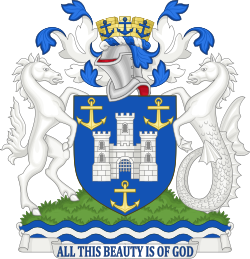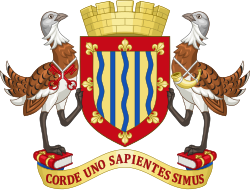| Council | Image | Granted | Notes |
|---|
| Buckinghamshire Council | | The council agreed to apply for a new coat of arms from the College of Arms in November 2021. [3] | County Council, became Unitary in 2020. |
| Bristol City Council |  | Transferred 1974 | District Council, became Unitary in 1996. |
| Cornwall Council |  | Transferred 1975 | County Council, became Unitary in 2009. |
| Cumberland Council |  | 1951 [a] | County Council abolished in 1974, revived Unitary in 2023. |
| Dorset Council |  | Transferred 2019 [4] | County Council, became Unitary in 2019. Crest (granted in 2009) not shown. |
| Durham County Council |  | 1974 | County Council, became Unitary in 2009. |
| East Riding of Yorkshire Council |  | 1996 | County Council abolished in 1974, revived Unitary in 1996. |
| Herefordshire Council |  | Transferred 1998 | County Council abolished in 1974, revived Unitary in 1998. |
| Isle of Wight Council |  | Transferred 1975 | County Council, became Unitary in 1995. |
| Northumberland County Council |  | Transferred 1974 | County Council, became Unitary in 2009. |
| North Yorkshire Council |  | Created 1980 [b] | County Council, became Unitary in 2023. |
| Rutland County Council |  | Transferred 1974 | District Council, became Unitary in 1997. |
| Shropshire Council |  | Transferred 1974 | County Council, became Unitary in 2009. |
| Somerset Council |  | Transferred 1974; Crest and supporters added 2003 [c] | County Council, became Unitary in 2023. |
| Wiltshire Council |  | Transferred 1976 | County Council, became Unitary in 2009. |













































































